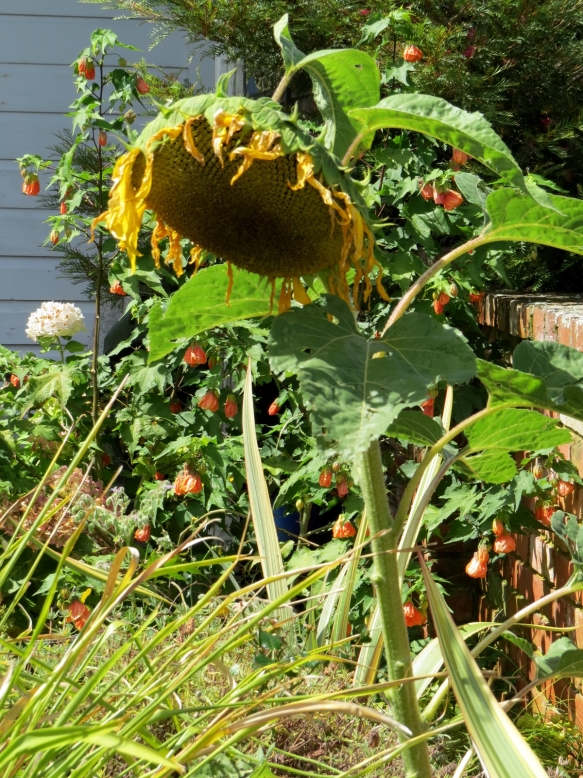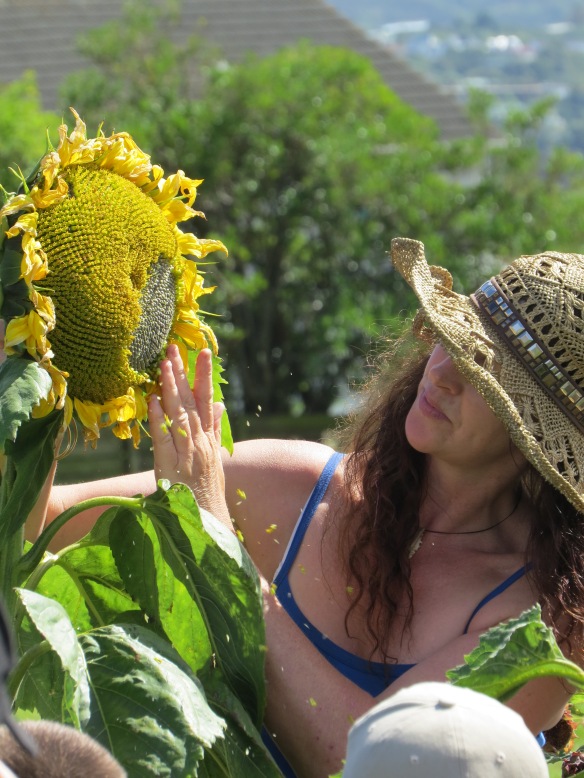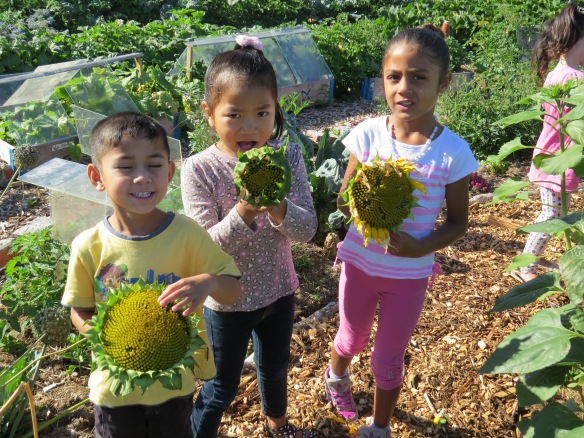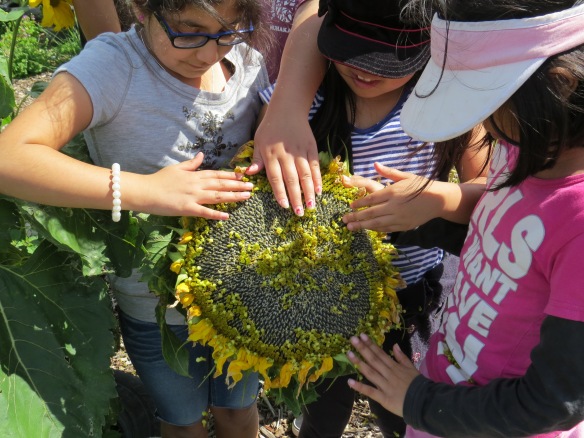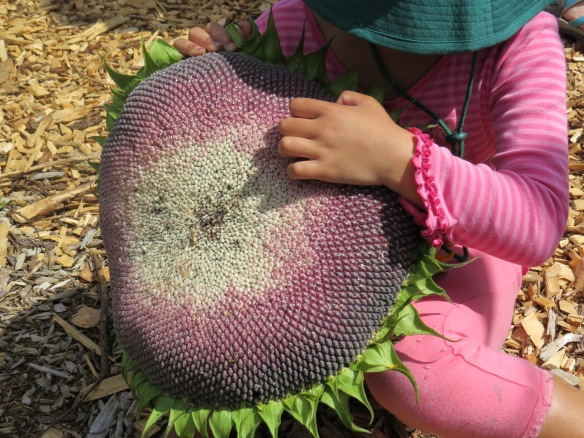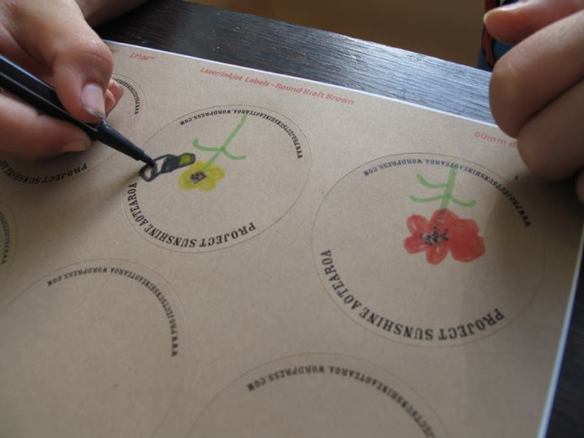When a sunflower bows its head to the ground, it is ready to harvest. The yellow petals around the edge of the sunflower will begin to wilt as well. This seems to be nature’s way of making any rain run right off the flower head (to stop the seeds from rotting) and also acts as a method of protecting the seeds from being eaten by birds (not that this stops them!)
We like to leave some seed for the birds to eat and then save the rest so that we can plant them again later in the year.
Once a sunflower has turned its face to the ground, you can dust off the florets off the face of the flower before you cut the sunflower head off the stalk.
Our Epuni farmers have been harvesting lots of seed heads recently. They cleanly cut the sunflower head off the stalk using secateurs. If it looks like there might be more flower heads that might still open on the stalk, they cut the flower head off carefully, so that these buds can still open and flower.
Once the flower heads have been cut they need to dry out, so that the seed can be safely stored over Winter. This is an important step so that they don’t rot over the winter period.
These sunflower heads have been drying in the sun for a couple of weeks, and are nearly ready to be stored. They make a lovely crunchy noise when they are handled, which lets us know that there’s not much moisture left in them.

